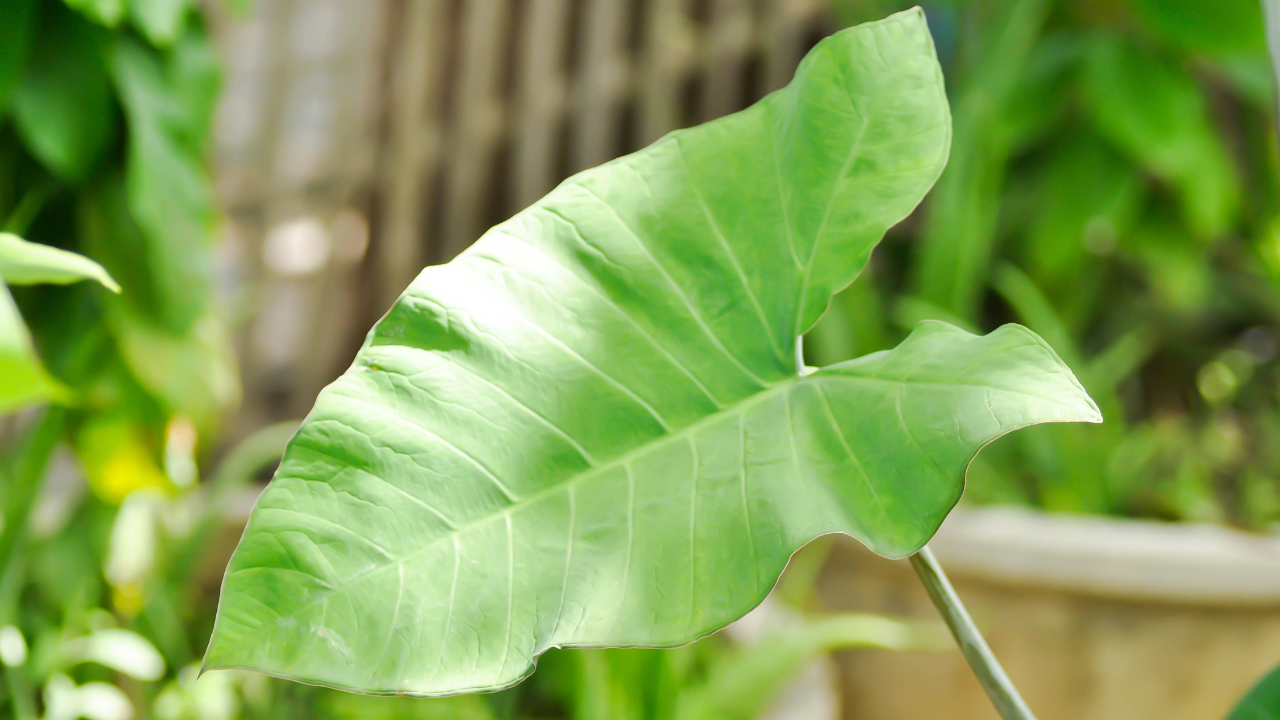Xanthosoma, often referred to as ‘elephant ear’ due to its large, heart-shaped leaves, is a stunning tropical plant that can add a lush, exotic touch to any garden or indoor space. Native to tropical America, this plant thrives in warm, humid environments. To keep your Xanthosoma healthy and vibrant, it’s essential to understand its specific care needs. Here are ten comprehensive tips to ensure your Xanthosoma flourishes.
1. Proper Lighting
Xanthosoma plants prefer bright, indirect light. While they can tolerate some direct sunlight, too much can scorch their leaves. Ideally, place your Xanthosoma in a spot where it can receive filtered sunlight or partial shade, especially during the hottest parts of the day.
If you’re growing Xanthosoma indoors, position it near a window with sheer curtains or use a grow light to mimic natural sunlight. Avoid placing it in full shade, as insufficient light can lead to weak growth and dull leaves.
2. Optimal Soil Conditions
Xanthosoma thrives in well-draining, fertile soil rich in organic matter. A mix of peat, compost, and perlite or sand can create an ideal environment for its roots. This ensures the soil retains enough moisture while preventing waterlogging, which can lead to root rot.
Regularly check the soil’s pH level, aiming for a slightly acidic to neutral range (pH 6.0-7.0). Amending the soil with organic compost can improve its fertility and texture, promoting healthier growth.
3. Adequate Watering
Consistent moisture is crucial for Xanthosoma, but it’s equally important to avoid overwatering. Water the plant thoroughly when the top inch of soil feels dry. Ensure the pot has good drainage to prevent standing water, which can cause root rot.
During the growing season (spring and summer), you may need to water more frequently. Reduce watering in the winter months when the plant’s growth slows down. Always use room temperature water to avoid shocking the roots.
4. Humidity Requirements
Xanthosoma plants thrive in high humidity environments. If you live in a dry climate, consider using a humidifier or placing a tray of water near the plant to increase the humidity around it. Misting the leaves regularly can also help maintain adequate moisture levels.
Grouping Xanthosoma with other humidity-loving plants can create a microenvironment with higher humidity, benefiting all the plants involved. Avoid placing the plant near heating or cooling vents, as these can dry out the air.
5. Temperature Tolerance
Being a tropical plant, Xanthosoma prefers warm temperatures. The ideal range is between 65°F and 80°F (18°C to 27°C). It’s important to protect the plant from cold drafts and temperatures below 50°F (10°C), as this can cause damage to the leaves and slow down growth.
If you’re growing Xanthosoma outdoors, ensure it’s planted in a spot sheltered from strong winds and sudden temperature changes. During colder months, consider bringing the plant indoors or providing a protective cover.
6. Fertilization Practices
Xanthosoma benefits from regular feeding during the growing season. Use a balanced, water-soluble fertilizer every two to four weeks to provide essential nutrients. A slow-release fertilizer can also be an effective option, ensuring the plant receives a steady supply of nutrients.
Be mindful not to over-fertilize, as this can lead to salt buildup in the soil and damage the roots. During the dormant winter period, reduce or halt fertilization to prevent overfeeding.
7. Pruning and Maintenance
Regular pruning helps Xanthosoma maintain its shape and promotes healthy growth. Remove any yellowing or damaged leaves to prevent disease and pests from taking hold. Trimming back leggy stems can encourage the plant to produce more foliage.
Inspect your Xanthosoma regularly for signs of pests such as aphids or spider mites. Treat any infestations promptly with insecticidal soap or neem oil to keep your plant healthy and vigorous.
8. Repotting Tips
Xanthosoma plants typically need repotting every two to three years to accommodate their growing root system. Choose a pot that is one size larger than the current one, and ensure it has adequate drainage holes.
Gently remove the plant from its old pot, being careful not to damage the roots. Place it in the new pot with fresh soil, and water thoroughly. Repotting is best done in the spring, when the plant is beginning its active growth phase.
9. Pest and Disease Management
Xanthosoma can be susceptible to pests like spider mites, aphids, and mealybugs. Regularly check the undersides of the leaves and the stems for any signs of infestation. Natural remedies such as neem oil or insecticidal soap can effectively control these pests.
Fungal diseases such as leaf spot and root rot can also affect Xanthosoma. Ensure proper air circulation around the plant and avoid overhead watering to reduce the risk of fungal infections. Remove and destroy any affected leaves to prevent the spread of disease.
10. Propagation Techniques
Propagating Xanthosoma can be done through division or stem cuttings. For division, carefully separate a section of the plant with roots attached and replant it in a new pot with fresh soil. Ensure each division has several healthy leaves and roots.
Stem cuttings can be taken from healthy, mature plants. Cut a segment of the stem with at least one node, and plant it in moist soil or water until roots develop. Once the cutting has established roots, it can be transferred to a pot with well-draining soil.
By following these care tips, you can enjoy the beauty and vitality of your Xanthosoma plant for years to come. With the right environment and attention, these tropical beauties will thrive and add a touch of the exotic to your home or garden.

